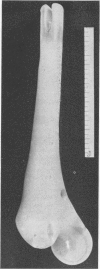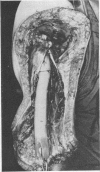Abstract
The expansion of the plastics industry during the last few years has introduced the possibility of hazards from new polymers and from modifications to old products. The first two sections of this paper deal with the diminishing incidence of dermatitis in synthetic resin plants using formaldehyde and with the toxic properties of some chemicals added during the manufacture of polyvinyl chloride compositions. After a brief reference to the hazards of catalysts used in the manufacture of new polymers in the polythene series, an account is given of the dangers of polytetrafluoroethylene. At high temperatures this important new polymer gives rise to decomposition products that may be harmful when inhaled, and smoking contaminated tobacco is one of the commonest ways in practice by which workmen may be affected. Animal experiments have confirmed the dangers of excessive heating of this polymer although the symptoms differ from those in human beings so that it is still not possible to incriminate any one of the products evolved at these temperatures. In a description of the hazards of manufacture of copolymers of butadiene that are new to this country the toxic properties of the monomers are given in some detail since some of these could prove harmful to the factory worker unless adequate precautions are taken, although the final materials are inert and free from danger.
There is an increasing demand for the use of plastics by the general public and in specialized fields. They are widely used in the food industry and for domestic articles so that it is important that both the raw materials and the final article will not contaminate food or beverages. None of the constituents of the plastics should be capable of being extracted by the food or drink with which they come into contact, but in order to ensure this it is more convenient in practice to submit them in the first place to the action of a few selected solvents. Depending on the results of these initial experiments the materials may subsequently have to be submitted to pharmacological tests which may take several weeks to be completed. Three unusual problems in this field are described.
The most difficult application in which to ensure freedom from danger is probably in the surgical use of plastics. Surgeons already have wide experience of the technique of handling and using plastics. Although the effects of a few selected plastics have been investigated and described, the response of living tissues to these materials is often unpredictable. The results of implantation in many patients will not be available for several years and it is suggested that the misuse of plastics in this field presents dangers that may not always be appreciated.
Full text
PDF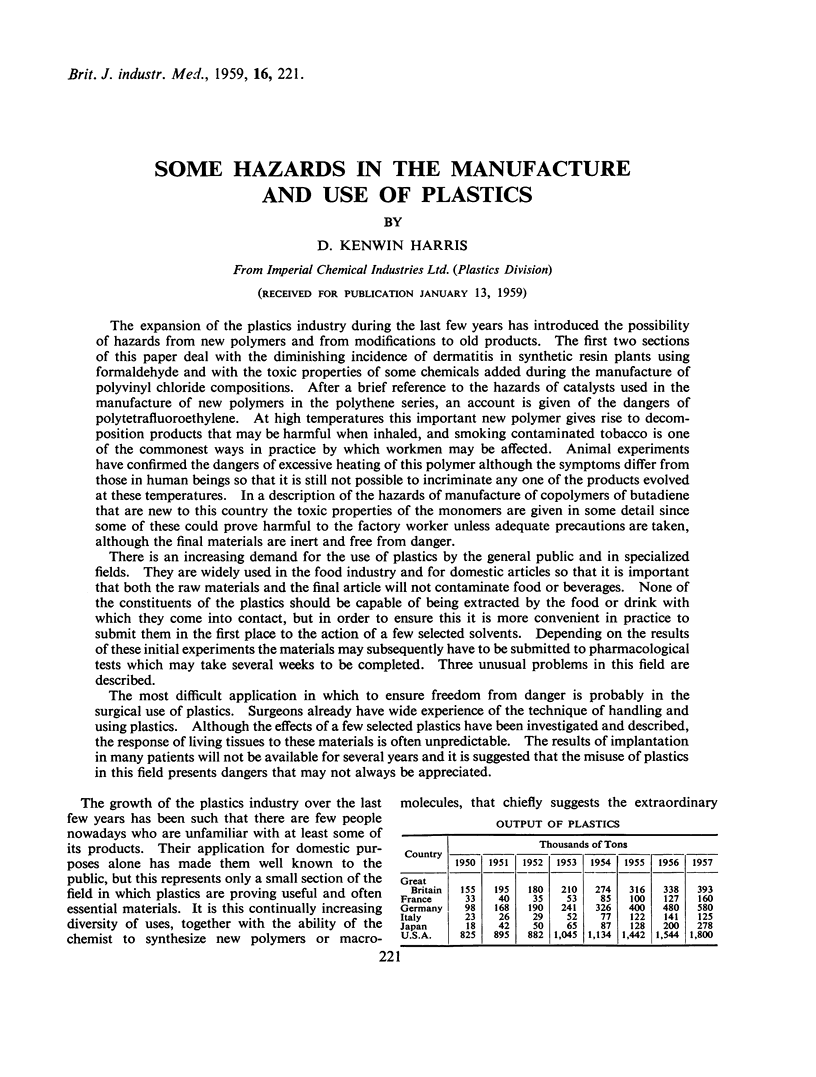
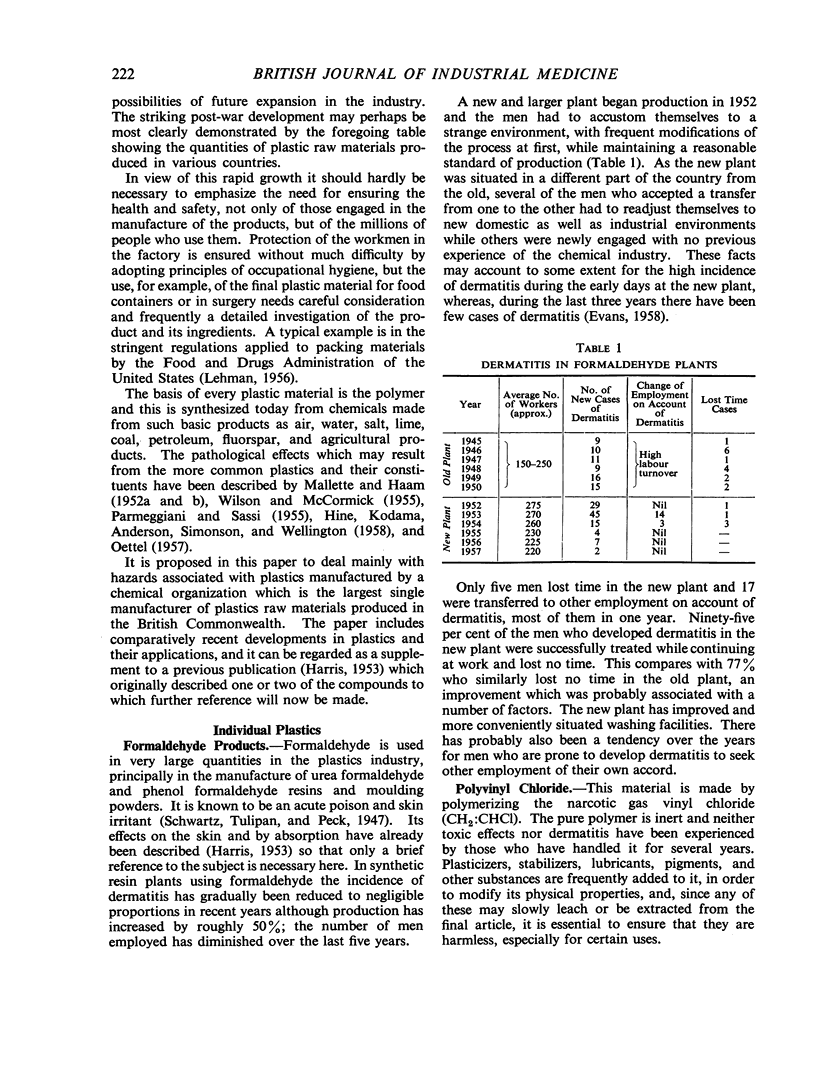
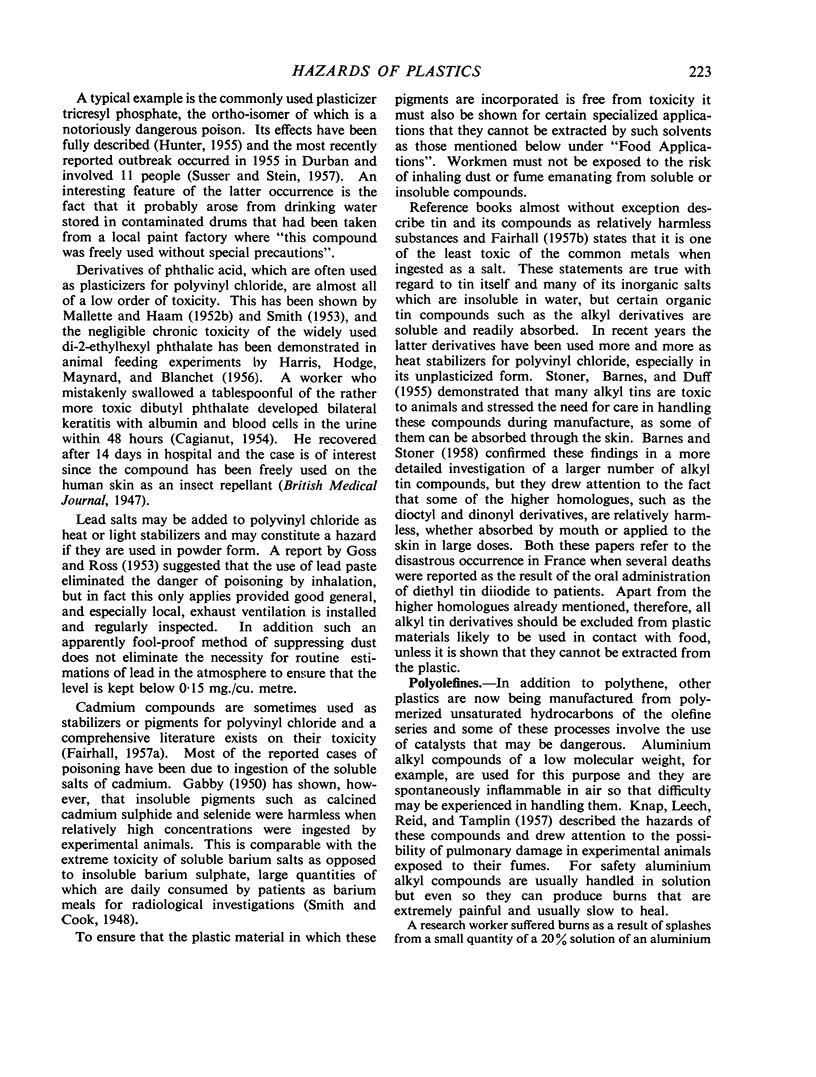
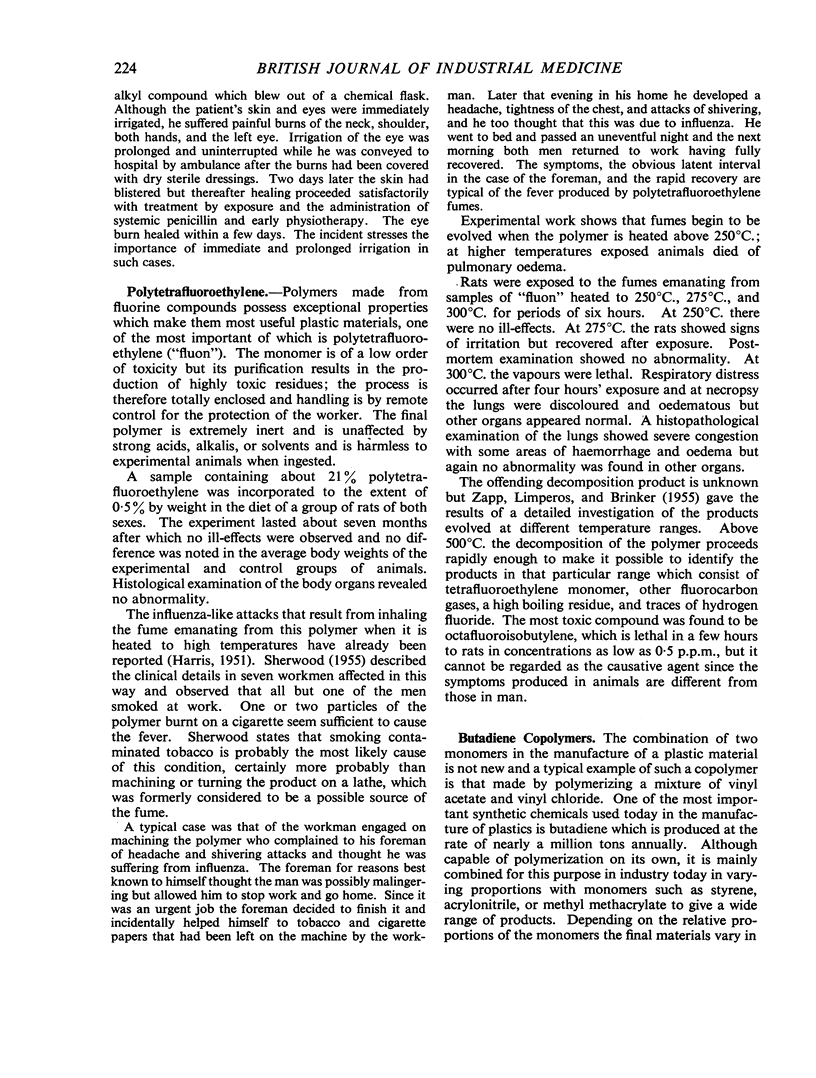
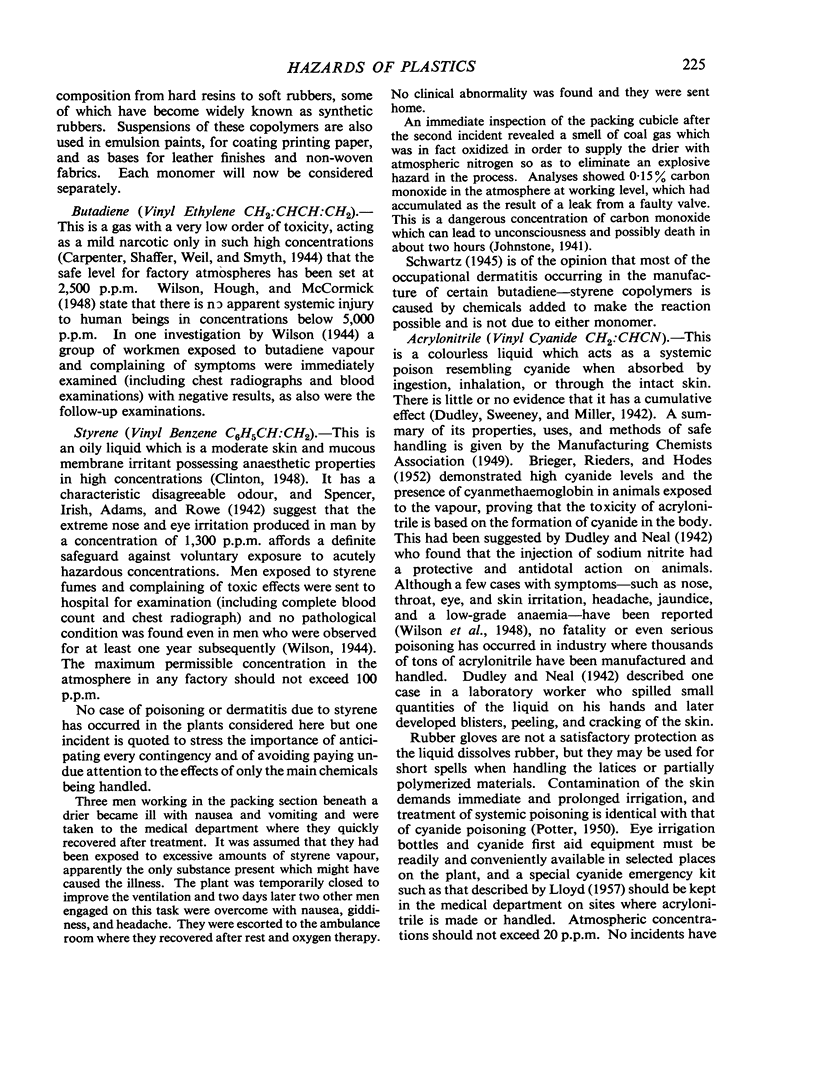
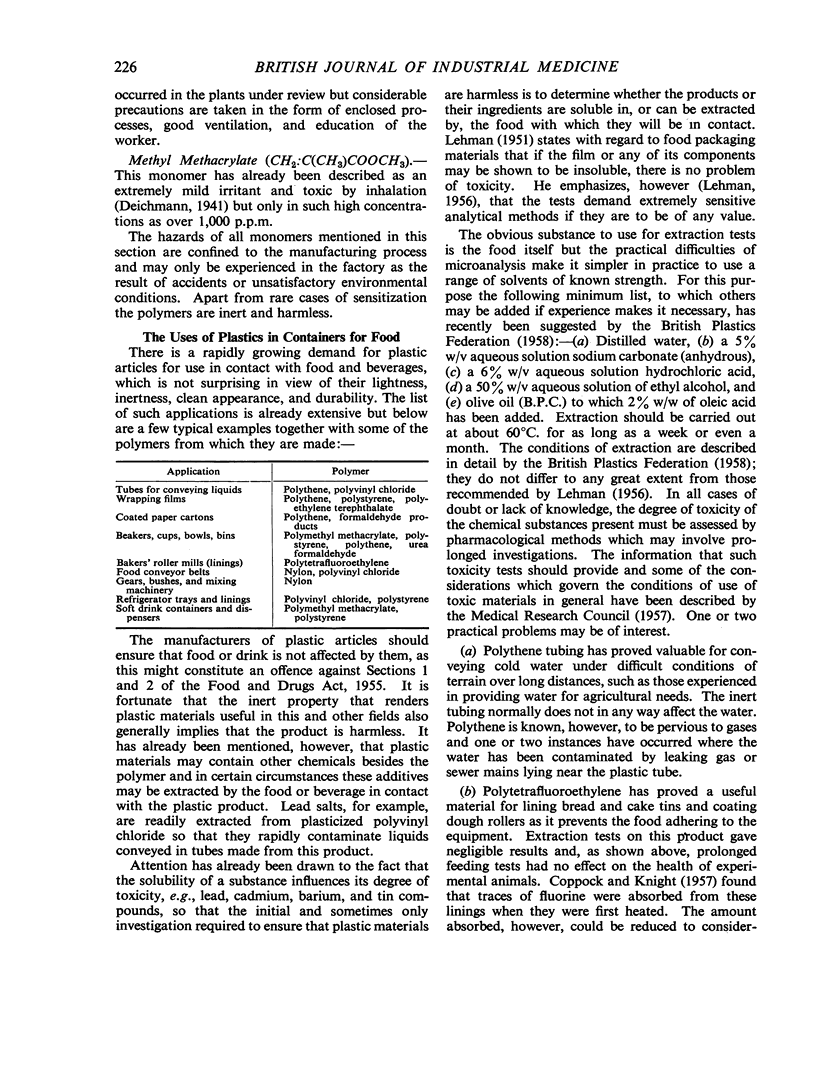
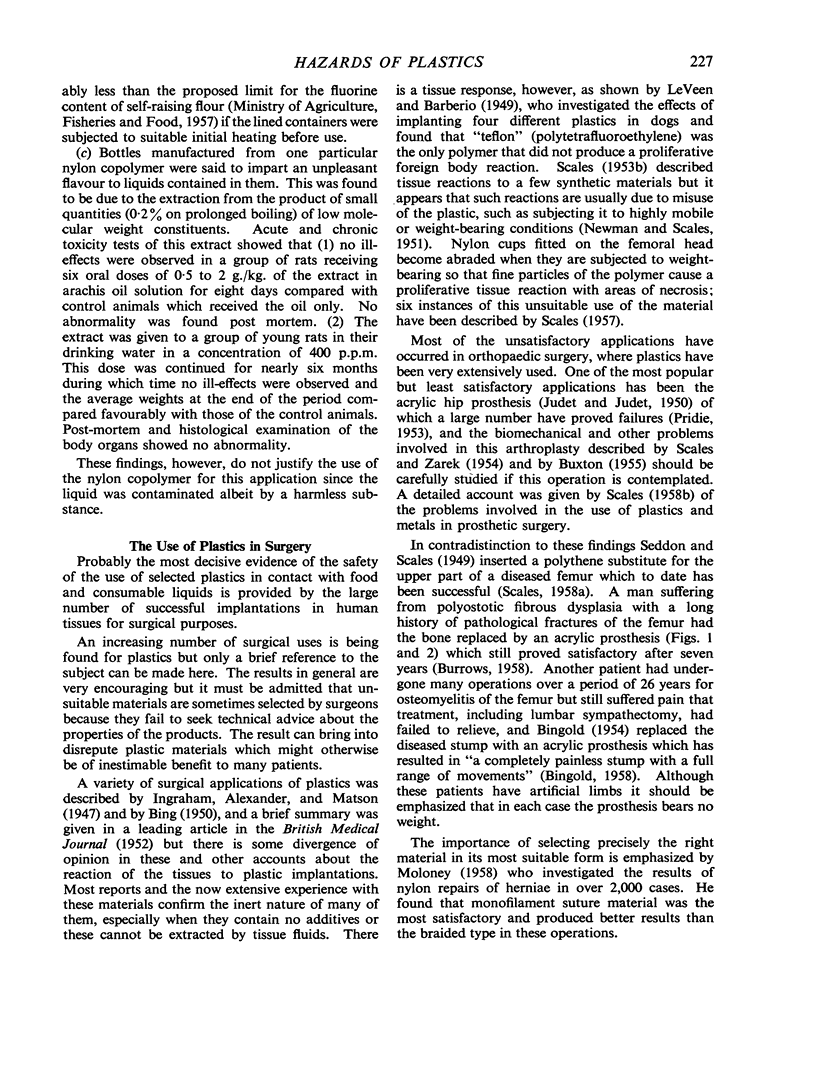
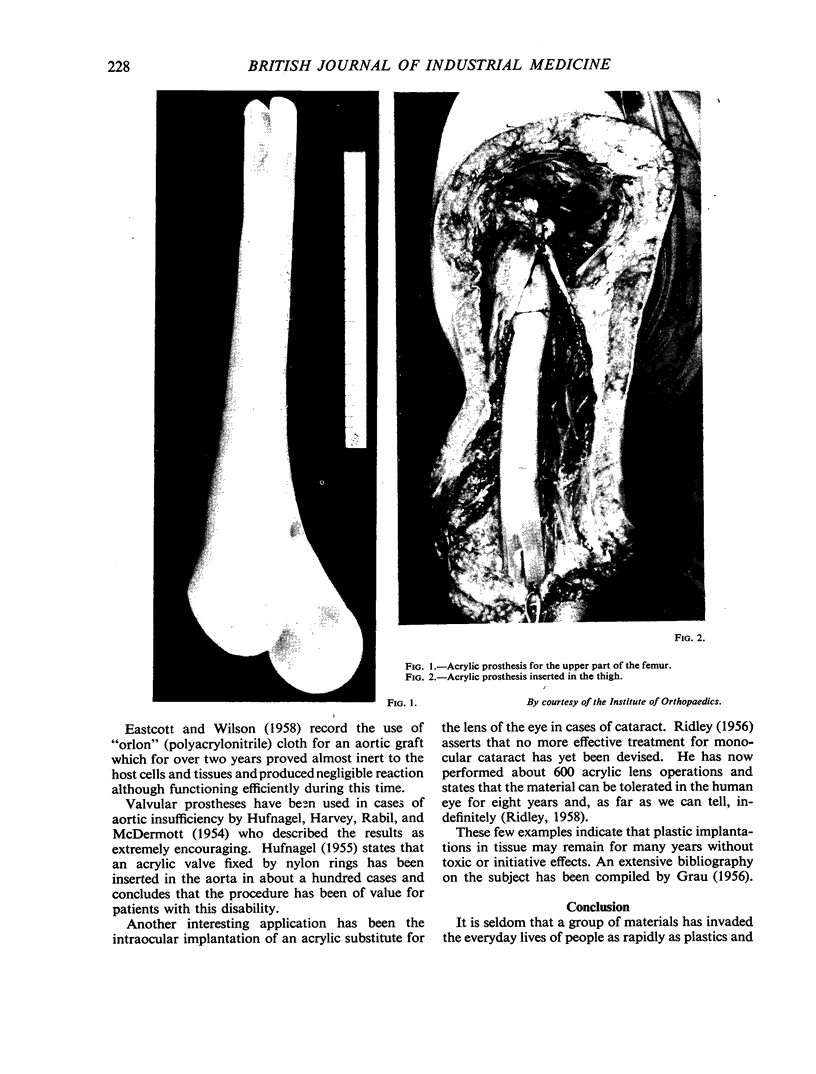
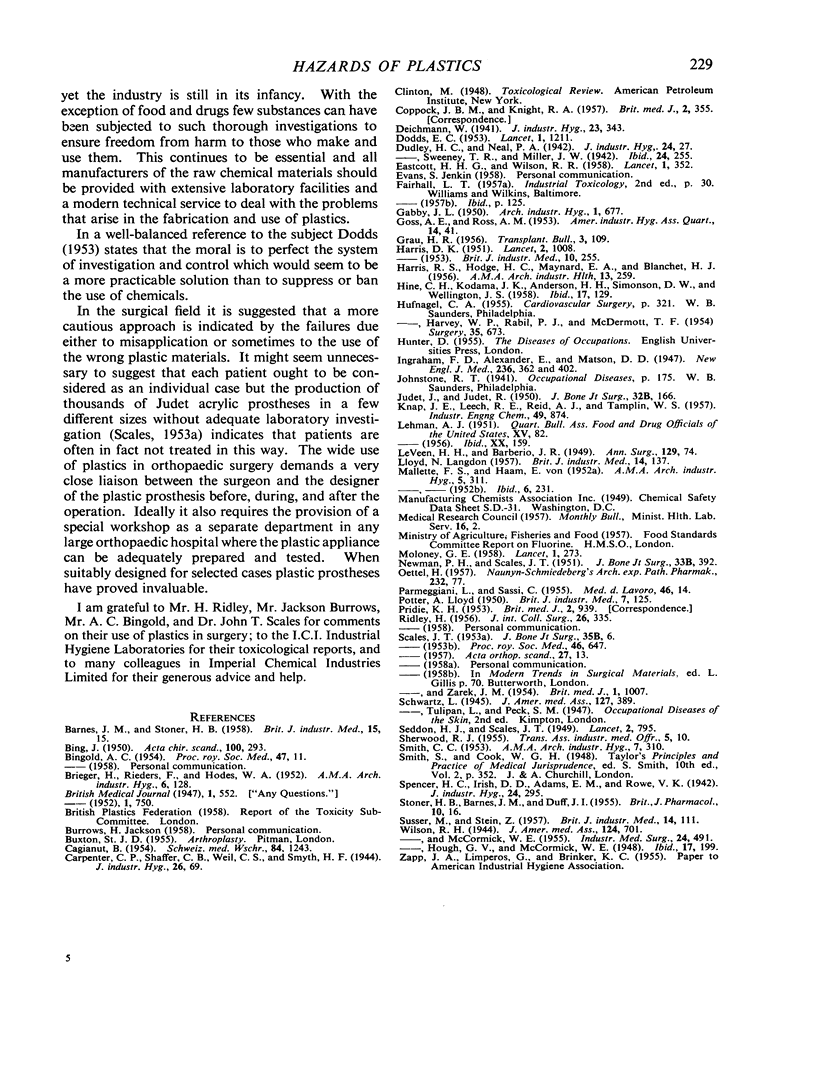
Images in this article
Selected References
These references are in PubMed. This may not be the complete list of references from this article.
- BING J. The use of plastics in surgery. Acta Chir Scand. 1950;100(4):293–310. [PubMed] [Google Scholar]
- BINGOLD A. C. Acrylic replacement of painful osteomyelitic femoral amputation stump. Proc R Soc Med. 1954 Jan;47(1):11–13. [PMC free article] [PubMed] [Google Scholar]
- BRIEGER H., RIEDERS F., HODES W. A. Acrylonitrile; spectrophotometric determination, acute toxicity, and mechanism of action. AMA Arch Ind Hyg Occup Med. 1952 Aug;6(2):128–140. [PubMed] [Google Scholar]
- CAGIANUT B. Keratitis erosiva und Nephritis toxica nach Einnahme von Dibutylphthalat. Schweiz Med Wochenschr. 1954 Oct 30;84(44):1243–1244. [PubMed] [Google Scholar]
- COPPOCK J. B., KNIGHT R. A. Polytetrafluorethylene films in baking. Br Med J. 1957 Aug 10;2(5040):355–355. doi: 10.1136/bmj.2.5040.355. [DOI] [PMC free article] [PubMed] [Google Scholar]
- DODDS E. C. Chemicals and food; a reconsideration. Lancet. 1953 Jun 20;1(6773):1211–1214. doi: 10.1016/s0140-6736(53)92253-3. [DOI] [PubMed] [Google Scholar]
- EASTCOTT H. H., WILSON R. R. Fate of orlon aortic implant in man. Lancet. 1958 Feb 15;1(7016):352–354. doi: 10.1016/s0140-6736(58)90973-5. [DOI] [PubMed] [Google Scholar]
- GABBY J. L. Toxicity of cadmium sulfide and cadmium sulfoselenide pigments. Arch Ind Hyg Occup Med. 1950 Jun;1(6):677–684. [PubMed] [Google Scholar]
- HARRIS D. K. Polymer-fume fever. Lancet. 1951 Dec 1;2(6692):1008–1011. doi: 10.1016/s0140-6736(51)93401-0. [DOI] [PubMed] [Google Scholar]
- HARRIS R. S., HODGE H. C., MAYNARD E. A., BLANCHET H. J., Jr Chronic oral toxicity of 2-ethylhexyl phthalate in rats and dogs. AMA Arch Ind Health. 1956 Mar;13(3):259–264. [PubMed] [Google Scholar]
- HINE C. H., KODAMA J. K., ANDERSON H. H., SIMONSON D. W., WELLINGTON J. S. The toxicology of epoxy resins. AMA Arch Ind Health. 1958 Feb;17(2):129–144. [PubMed] [Google Scholar]
- HUFNAGEL C. A., HARVEY W. P., RABIL P. J., McDERMOTT T. F. Surgical correction of aortic insufficiency. Surgery. 1954 May;35(5):673–683. [PubMed] [Google Scholar]
- JUDET J., JUDET R. The use of an artificial femoral head for arthroplasty of the hip joint. J Bone Joint Surg Br. 1950 May;32-B(2):166–173. doi: 10.1302/0301-620X.32B2.166. [DOI] [PubMed] [Google Scholar]
- Leveen H. H., Barberio J. R. Tissue Reaction to Plastics Used in Surgery with Special Reference to Teflon. Ann Surg. 1949 Jan;129(1):74–84. doi: 10.1097/00000658-194901000-00008. [DOI] [PMC free article] [PubMed] [Google Scholar]
- MALLETTE F. S., VON HAAM E. Studies on the toxicity and skin effects of compounds used in the rubber and plastics industries. I. Accelerators, activators, and antioxidants. AMA Arch Ind Hyg Occup Med. 1952 Apr;5(4):311–317. [PubMed] [Google Scholar]
- MOLONEY G. E. Results of nylon-darn repairs of herniae. Lancet. 1958 Feb 8;1(7015):273–278. doi: 10.1016/s0140-6736(58)91027-4. [DOI] [PubMed] [Google Scholar]
- NEWMAN P. H., SCALES J. T. The unsuitability of polythene for movable weight-bearing prostheses; report of a case of cup arthroplasty of the hip. J Bone Joint Surg Br. 1951 Aug;33-B(3):392–398. doi: 10.1302/0301-620X.33B3.392. [DOI] [PubMed] [Google Scholar]
- PRIDIE K. H. The broken acrylic head. Br Med J. 1953 Oct 24;2(4842):939–939. doi: 10.1136/bmj.2.4842.939. [DOI] [PMC free article] [PubMed] [Google Scholar]
- RIDLEY H. Late surgical results of use of the intraocular acrylic lens. J Int Coll Surg. 1956 Sep;26(3):335–341. [PubMed] [Google Scholar]
- SCALES J. T., ZAREK J. M. Biomechanical problems of the original Judet prosthesis. Br Med J. 1954 May 1;1(4869):1007–1013. doi: 10.1136/bmj.1.4869.1007. [DOI] [PMC free article] [PubMed] [Google Scholar]
- SEDDON H. J., SCALES J. T. A polythene substitute for the upper two-thirds of the shaft of the femur. Lancet. 1949 Oct 29;2(6583):795–795. doi: 10.1016/s0140-6736(49)91375-6. [DOI] [PubMed] [Google Scholar]
- SUSSER M., STEIN Z. An outbreak of tri-ortho-cresyl phosphate (T.O.C.P.) poisoning in Durban. Br J Ind Med. 1957 Apr;14(2):111–120. doi: 10.1136/oem.14.2.111. [DOI] [PMC free article] [PubMed] [Google Scholar]
- WILSON R. H., MCCORMICK W. E. Plastics; the toxicology of synthetic resins. Ind Med Surg. 1955 Nov;24(11):491–496. [PubMed] [Google Scholar]



